Salvador Attractions You Can’t Miss
Salvador is the capital of Bahia (Brazil). Steeped in history, it lets one have the best experience in its fascinating sphere. The vibrant mingle of cultures ruling across its land takes its guests to the world of amusement. Taking on that note, you can find traces of Portuguese shimmer getting along with the local and African trends in the city.
The colonial-era architecture sets the stage for a mesmerizing vacation for its guests. They thrive on the scene to reflect on the city’s past narratives. Trace the presence of African influence in its affairs to African slavery.
Its colonial buildings also help it stand out in the domain by donning the prestigious UNESCO World Heritage designation. The vibrant culture of the city does not restrict itself to the leaves of its history book. But it rises to the fore to make waves in its festivals and celebration around the year. The rustling waters of Baía de Todos os Santos get around adding glitters to its case.
Arraying the dots of a magical exploration in the city, go through the following list putting up iconic places in the city.
1. Pelourinho
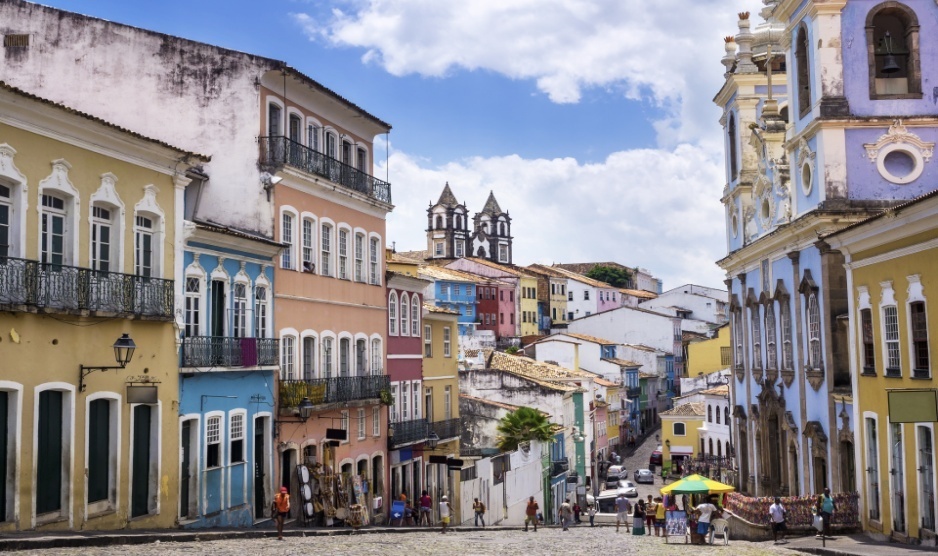
Pelourinho gets on the top of the narrative for those wishing to live the historical essence of the city. It cements its case in the domain with the privilege of being a UNESCO World Heritage Site. Its colonial past retains its charm in its vibrant pockets. The colorful colonial buildings get around the scene to serve an enticing delight to the full. They present the shades of the Portuguese period to their admirers.
The 17th and 18th-century structures enclose many thrilling facets of the evolution of the city. Not just that, they continue to don the imprint of time to win hearts bubbling around. They manage to make a mark in tourism by serving various delights to tourists. Many of the colonial-era buildings have altered their identity by putting on hotel hues for their guests.
For instance, check out the much-celebrated Museu da Cidade in Rua Gregório de Matos. The City Museum shimmers with many surprises for its guests. Abelardo Rodrigues Museum takes that narrative to another level with the art waves.
Standing out on the list is the iconic Casa do Benin. It throws light on the scintillating cultural vibes of the Benin kingdom. The kingdom played a vital role in scripting the slave presence and history of the city. The heart-winning hues of the area weave an unforgettable experience for its guests.
2. Elevador Lacerda
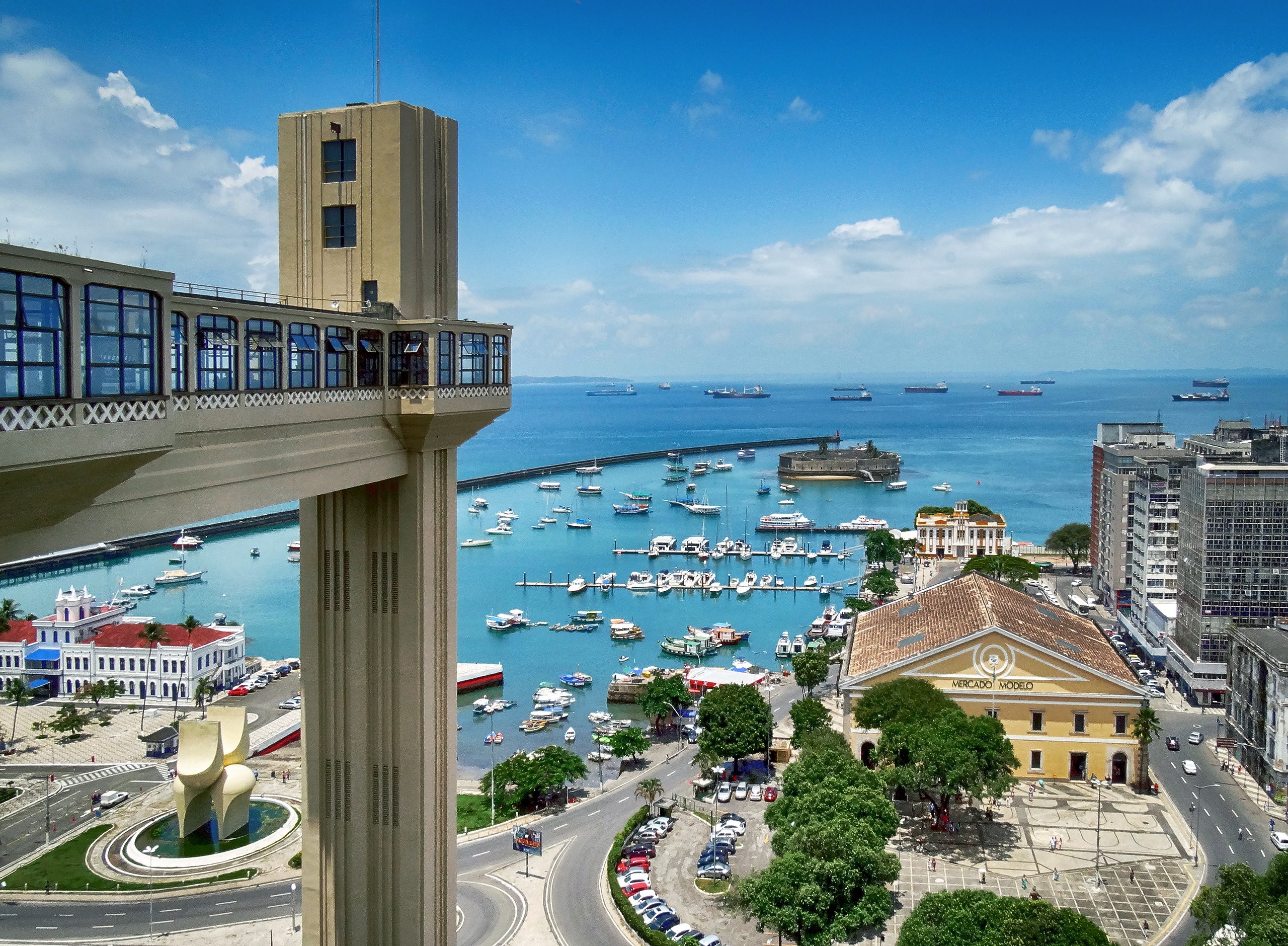
Elevador Lacerda is one of the landmarks in the city. The right-angled white structure towers up from the ground to meet the arm from the cliff top. It rules the skyline of the city to win hearts. Not just its structure, but its history also adds to its name and fame. The idea of the elevator popped from the difficulties that people faced in moving between Cidade Alta (high city) and Cidade Baixa. One can trace that to the difference between the geographical elevations of the two parts of the city.
A rope and pulley system by Jesuits in 1610 evolved on the scene to pare down the burden to some extent. Finally, it became a part of the city scene on Nossa Senhora da Conceição da Praia day in 1873. It borrowed its name from the occasion and came to be known as the Elevador da Conceição. Antônio de Lacerda forged its glory along with his brother using his engineering flair. Acknowledging his efforts, it donned its name: Elevador Lacerda in 1896. Since then, it has been creating a mark in the domain with that name.
It underwent a design renovation in 1930 and took up an Art Deco look. With its fame still on, it stands at 240 feet (73m) high. The elevator comes with four shafts to carry 128 people at capacity. They take one up and down in less than 30 seconds. Catering to the needs of the people at any hour of the day, it keeps working for 24 hours. According to one estimate, more than 750000 people use the elevator in a month. Adding to its case, it also forms a part of Brazil’s Institute of National Historical and Artistic Heritage list.
Thus, it stands as a center of attraction, not only for Salvador guests but also for Brazil lovers.
3. Carmelite Church
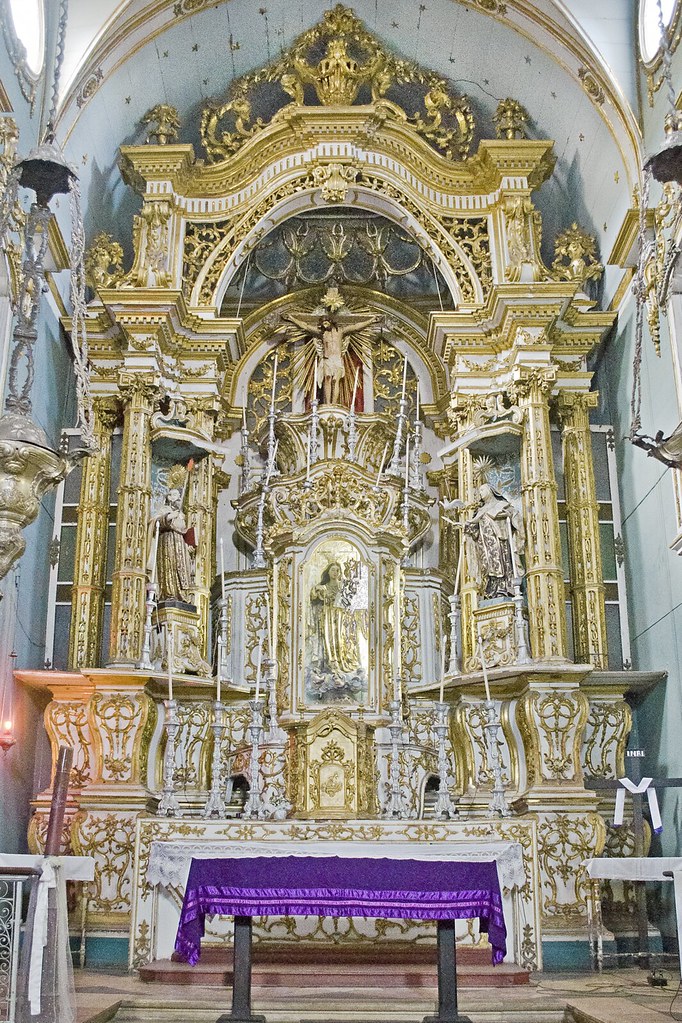
Another star in the city that invites one’s attention is the Carmelite church (Igreja da Ordem Terceira do Carmo). The Church manages to allure wanderlusts not only for its stunning architecture but also for its enticing past. Going through the history book, one can find its first construction dating to 1580. But an inferno engulfed the efforts in 1788 and led to its reconstruction. Deriving its existence from stone and brick, it manages to make waves in the domain. Its architecture gets at the heart of its iconic fame and name in the city.
Donning the magical classic Baroque style, it shimmers with a beautiful line pattern. Adding to that, one can also celebrate the presence of the two bell towers. Cherish the presence of a sacristy, a table house, a saint’s house, an ossuary, galleries, etc., on its premises. Like most 18th-century churches, it comes with a single nave with a choir. Adding to that, one can also find its side aisles with tribunes. A transversal sacristy also thrives at the back of the chancel. Its sacristy shimmers on the scene at its best with gold ruling across its sphere.
Taking its case to another level, it comes with a treasury that serves as a museum of sacred art. Going through the stunning masterpieces, one can end up with the glory of the cedar wood sculpture Christ in Chains. Its creator was Manuel das Chagas alias O Cabra. The art piece shimmers with more than 1,000 rubies. They get on the sculptor to represent Christ’s blood drop. One can trace its time to 1710.
Apart from that, one can also marvel at the architectural hues of the majestic convent. It stands beside the church as a beautiful luxury hotel.
4. São Francisco
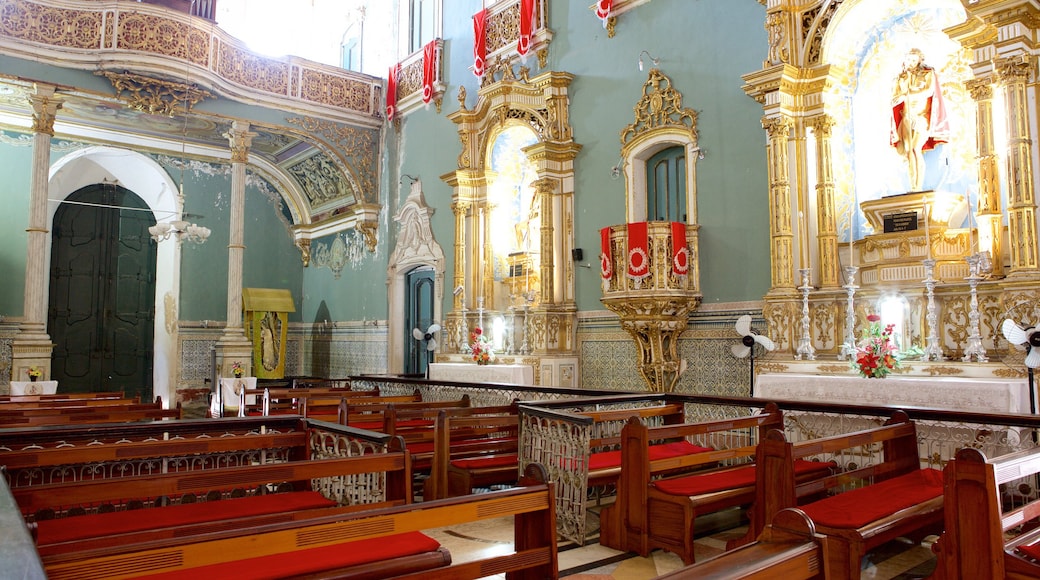
São Francisco tops the list of the most beautiful churches in the city. Its vibrant gleam makes it stand out. Its architectural glory rules the area to win hearts looking for the best around. The decorations of the church make it a star in the domain. Its construction period lasted between 1708 and 1750. Living its charm to the full, one can lose one’s heart to its wooden ceiling that throws light on the themes related to Virgin Mary. José Joaquim da Rocha dons the privilege of painting the wooden ceiling in 1774.
Its interiors stir their visitors with the gold-covered wood carvings. Not just that, its altar takes that matter a notch high with its rich decorations. Adding to that, one can also figure out the Mannerist and Baroque styles thriving in its architecture while going around its premises. It comes with a fancy combination of wood carving and Azulejo depictions. Not just that, the two-story cloisters also come with blue-white tile panels.
Taking the enticing exploration ahead, one can end up admiring the beautiful façade of the church of the Franciscan Third Order. It adds to the starry narrative with statues of many saints and angels. Not just that, one can combine it with the interiors to see the architectural affair matching up to that of the Spanish Churrigueresque style.
Adding to that, its central location in the district of Pelourinho adorns its case with stars. It manages to secure a unique position in the colorful scene with its time-laden walls. Its iconic texture also comes up beautifully to add to that note.
5. Cathedral
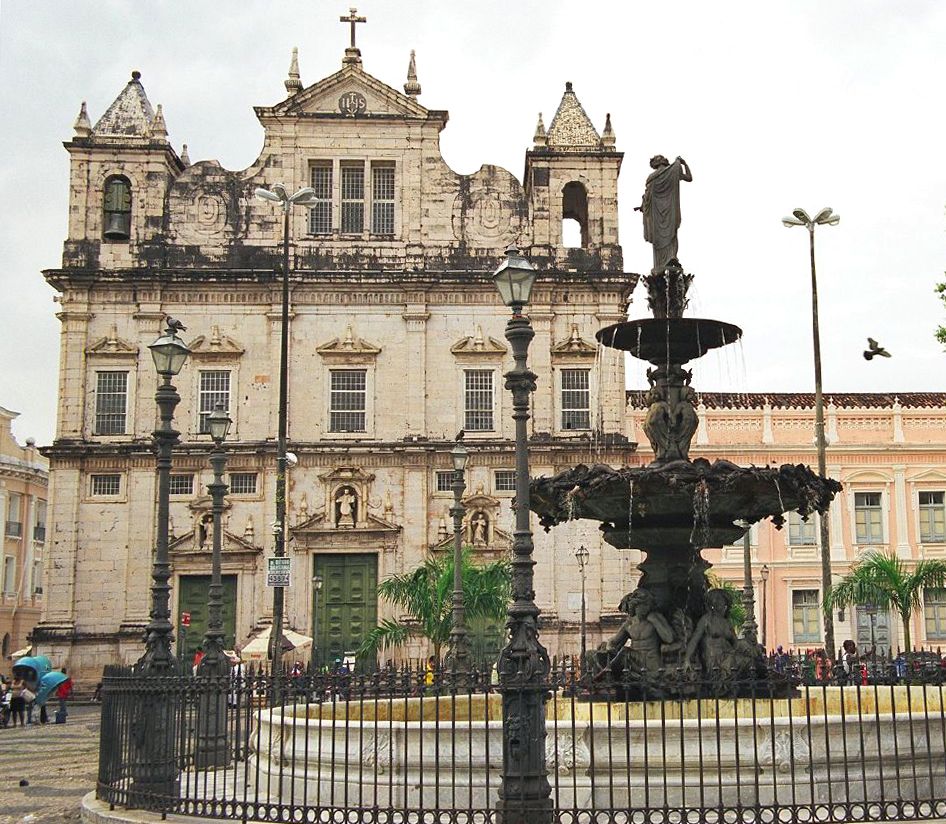
Located in Largo Terreiro de Jesus (Pelourinho), Catedral Basílica de Salvador shimmers as another star on the architectural platter of the area. Establishing its majestic narrative in the heart of the area, it comes with a wave of decorations. It gets on the scene as the primate archbishop of Brazil. Going into its enticing case, one can come across the restored 30 reliquary busts and two altars ruling the scene. They together form a celebrated part of Brazilian sacred art belonging to the late 16th century.
Living that facet to the full, one can leave one’s eyes free to tune in to the 13 gold-plated altars. They come to the fore as one of the star attractions in the Cathedral. To one’s surprise, they shimmer with the presence of 50,000 gold leaves and 5,000 silver leaves.
Moving ahead, one can also admire the lining of the structure. One can also find the Latin symbol HIS. Attenuating one’s curiosity means ‘Jesus Humanity Savior’. One can trace its beauty to the efforts of 5 master carpenters. Not just their efforts, but they also made use of wood (loaded in four ships). Their continuous efforts over two years finally led to the creation of the symbol.
6. Igreja Do Senhor Do Bonfim
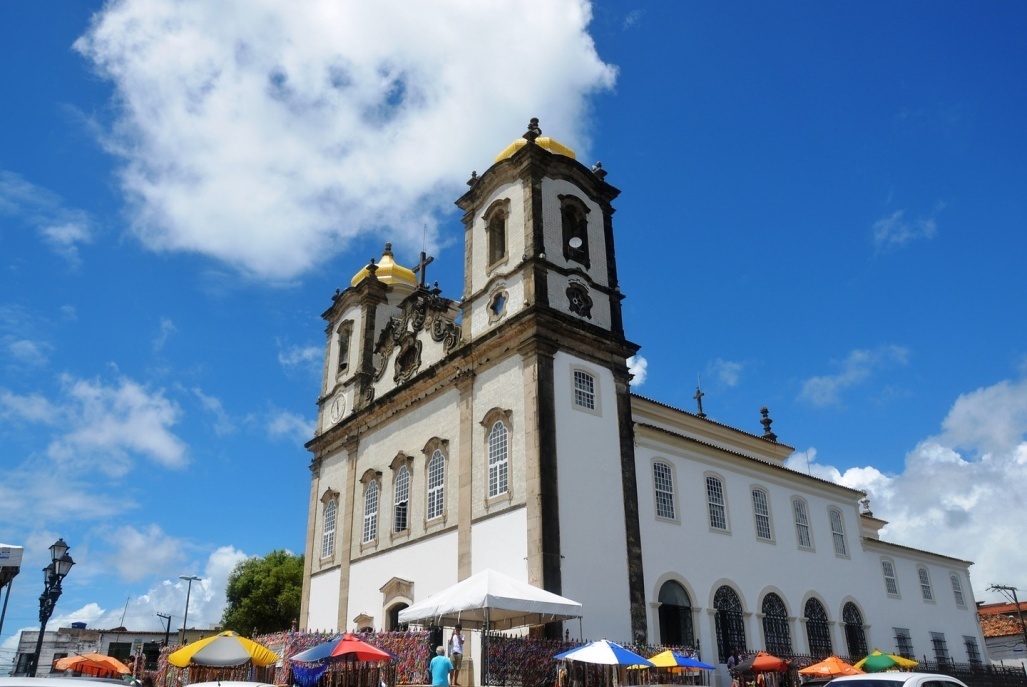
The Igreja de Nosso Senhor do Bonfim or Church of Our Lord of Good Ends shimmers away from the historic district to stand out in the domain. Paying tribute to Jesus on the cross manages to stimulate religious fervor in the domain. The purpose behind its construction was to accommodate the statue of Nosso Senhor do Bonfim. A Portuguese captain was the person who brought it to Brazil. Since then, it has been ruling the frame of historical buildings in the city.
Unlike most of its Catholic counterparts in the city, it comes with simple built and architecture. It shimmers with its plain façade with white tiles. Not just that, one can also find three central doors and five windows adorning that part.
To one’s delight, it wins hearts not only with its exteriors. But its interiors also come up beautifully to adorn its case. One can set their heart free for the gold and silver dazzles to sway it. Taking the enticing moment to another level, one can turn to the picture of men expressing their gratitude for saving their lives after a shipwreck on its ceiling. Not just that, one can also admire the blue and white Portuguese tiled panels throwing light on many religious themes and scenes.
7. Beaches
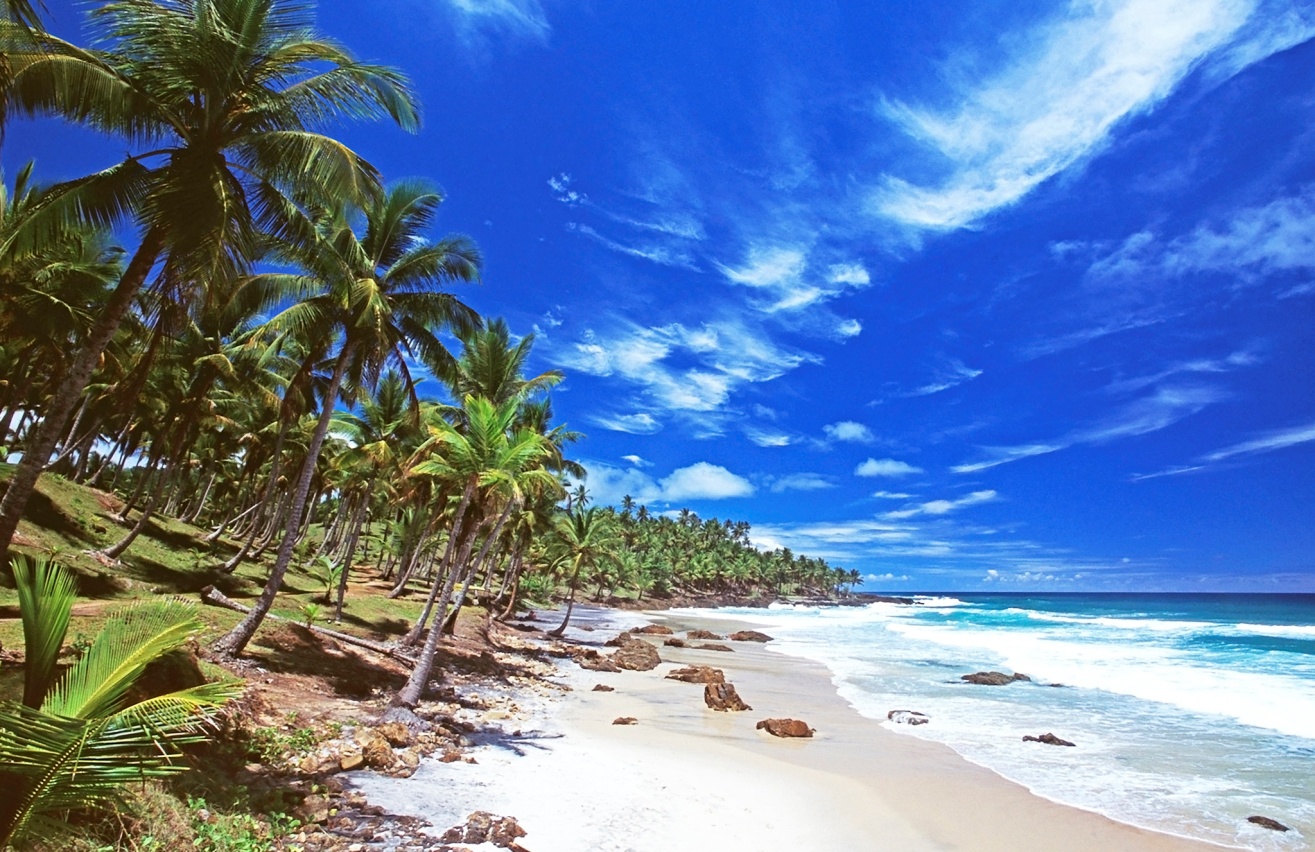
Salvador is the name for beach lovers. It bubbles with many beautiful beaches on the list. Shimmering sand matches up with blue waters to let one have the best time on the beach. Not just that, these beaches also support many excursions and thrilling activities. One can also look forward to basking in the tropical sun rays there. Praia de Porto da Barra is one of the most beautiful beaches in the world. It supports a 600 m-long sand strip to make waves in the domain. Its clear water adds another reason for one to consider a day there. One can find all kinds of water sports there. Thus, it is not a surprise to find it crowded throughout the day.
Apart from that, one can also check out the Praia do Farol da Barra. One can admire the glory of the lighthouse named Farol de Santo Antônio. It has been ruling the scene there since 1839. It comes to the fore as the heartening place for those looking for a private time at the beach. A visit during low tide can provide one the chance to spot fish. Adding to that, one can also have a scintillating sunset time at the beach.
Praia do Buracão is another name for those looking for some more choice in the domain. It entices one with its beauty. One can find green vibes with palm trees ruling the sphere. Apart from that, one can walk to Ocean Avenue to find the trendy area of Rio Vermelho.
8. Mercado Modela And Cidade Baixa
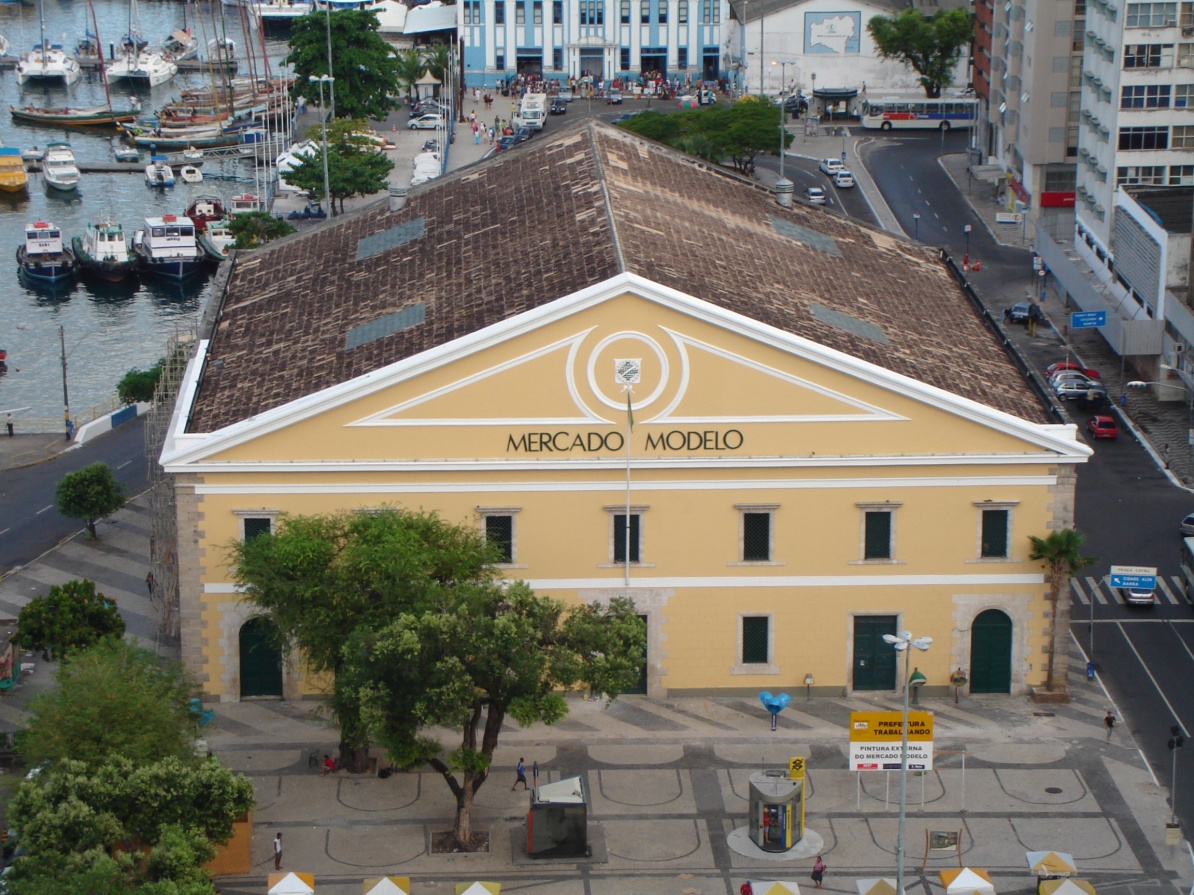
After exploring the upper town, it is time for one to turn to the lower part of Salvador. One can board Elevador Lacerda to get to the bustle in the lower town. At the base of the elevator, one can find the much-celebrated Mercado Modela. The business and commercial center of Salvador gets around the harbor to celebrate its position to the best. It allures both locals and tourists with its fame. The building not only celebrates its commercial facets but also its salience in the history of the city. It served as a Custom House in 1861. It was where slaves ended up after getting to Salvador.
It presently thrives as an established commercial center. It supports restaurants on its upper floor. One can stroll through the center to get deals on local art and other items. Its grandeur pulls one from the bustling commercial center. The ceiling work by José Joaquim da Rocha (1773) manages to leave its viewers spell-bounded. It gets on the board to fit in the scene as trompe-l’oeil work. Museu de Arte de Bahia, Carlos Costa Pinto Museum, Solar do Unhão and Palácio da Aclamação are some of the stars in the area. Thus, one cannot call one’s Salvador trip complete without visiting the lower town.
9. Santa Teresa And The Museum Of Sacred Art
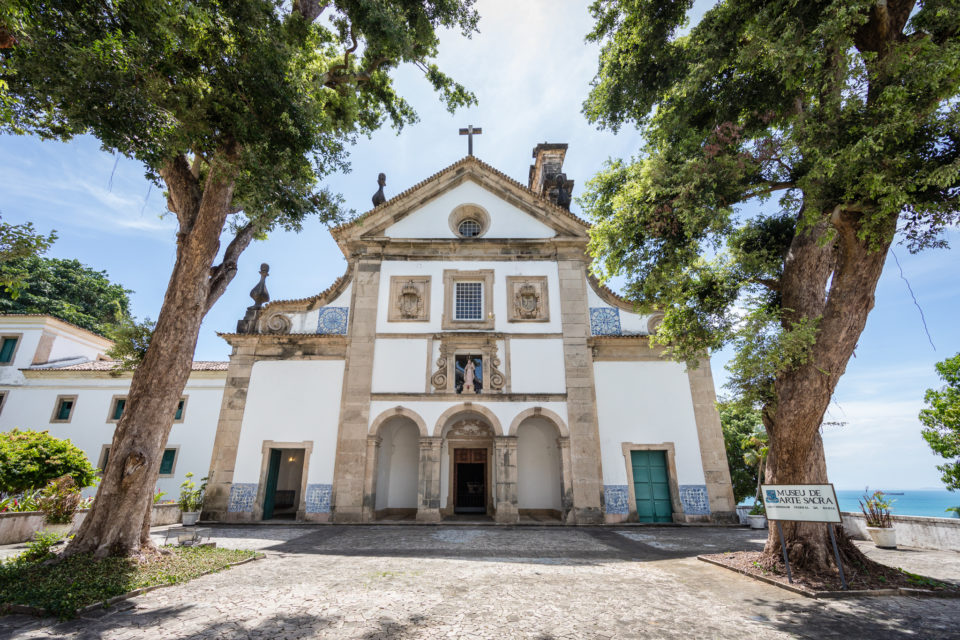
Other celebrated names that look up to welcoming the excited Salvador guests are Santa Teresa and the Museum of Sacred Art. The Church of Santa Teresa stands with its alluring premises and history to offer the best time to its visitors. Its construction period lasted from 1666 to 1697. Its design takes after the majestic Gesó church in Rome. Adding to its case, the old Convent of Santa Teresa stands by it to serve as The Museum of Sacred Art.
One can stroll around its premises to find the church, sacristy, choir, inner chapel, dining room, chapter room, and library. There are 16 halls, 12 rooms, 10 cells, and two stone stairways. Adding to that, one can marvel at its panels with the 17th-century tiles on the walls. Apart from that, one can also admire the art collection making waves in the museum. Taking on that note, one can lose one’s heart to the 17th- to 19th-century portrait sculpture in clay, wood, ivory, soapstone, and lead on the board.
Not just that, one can also turn to the sculptures and figures by Benedictine monk Agostinho da Piedade. The bust of St. Lucia (1630) adds stars to that narrative to a great extent. Cuzco school forms another name on the list. Painting domain shimmers with the names of José Teófilo de Jesus, José Joaquim da Rocha, and Ricardo do Pilar on the board.
Taking that delight further, the Museum comes with 146 windows. Not just the art pieces, but one can also cherish the scintillating interiors of the structures. A visit to the Santa Teresa complex can let one have enticing moments.






